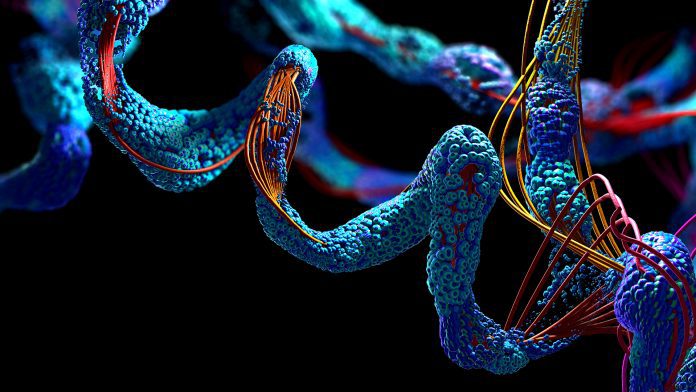
New research from Queen Mary University has found hundreds of proteins that may cause chronic metabolic diseases, such as type 2 diabetes and kidney disease.
An international team of researchers from the Medical Research Council (MRC) Epidemiology Unit, the University of Cambridge, and Queen Mary University of London worked on the study ‘Proteogenomic links to human metabolic diseases‘, which has been published in Nature Metabolism.
The new findings may facilitate the creation of new treatment pathways for chronic metabolic diseases.
The researchers found associations between over 900 regions in the human genome and almost 3000 proteins in human blood. Many of these proteins had not been identified before. The researchers applied their findings to genetic studies on hundreds of metabolic diseases. This allowed them to find more than 500 gene-protein-disease links.
Metabolic disease is a serious global health issue
Examples of chronic metabolic diseases include obesity, diabetes, and cardiovascular and liver diseases. Metabolic diseases have become one of the most significant global health threats in the 21st century.
These diseases can be treated with lifestyle changes, such as improvements in diet and activity. However, if the diseases are aggressive, doctors may suggest medications to control the patient’s blood pressure, cholesterol and blood sugar levels.
The team proved, for the first time, that people with high levels of the hormone GRP are less likely to develop type 2 diabetes. This is likely because GRP decreases the chances of someone becoming overweight. This evidence suggests GRP could be used as a potential target for the prevention and treatment of diabetes.
The study has contributed to an improved understanding of hundreds of genome regions, which may open the door to more targeted treatment options. Proteins are the most common target of existing drugs as they are vital to the function of the human body.
“Thousands of regions in our genome have been identified to increase our risk for developing different metabolic diseases, but for most of them, we have a poor understanding of why this is,” said senior author Professor Claudia Langenberg, director of the Precision Healthcare University Research Institute at Queen Mary University.
“By measuring and integrating information on thousands of proteins in human plasma, we were able to create robust links between the genes that encode these proteins to many different diseases and demystify about 200 regions. This really narrows down the potential therapeutic targets at each genomic region, often a bottleneck for the translation of genomic,” she added.
Identifying new proteins helps the creation of new treatments
The researchers also found that a protein called DKKL1 was involved in multiple sclerosis and reinforced the depletion of certain immune B cells.
The biological mechanisms behind chronic metabolic diseases are not greatly understood. To improve this, the researchers linked genetic variation, blood protein levels and disease risks in their study. This allowed them to differentiate proteins which were likely to cause chronic metabolic disease. Identifying causal proteins is important as only interventions on causal proteins can facilitate the development of effective treatments.









